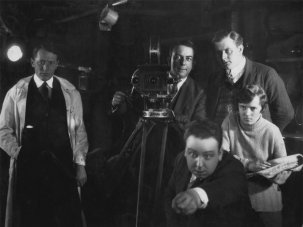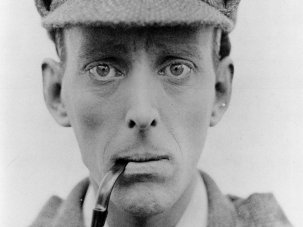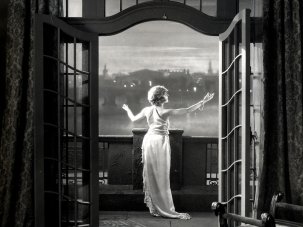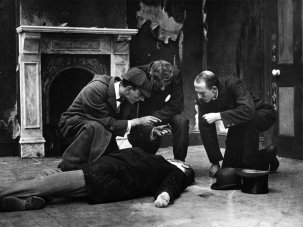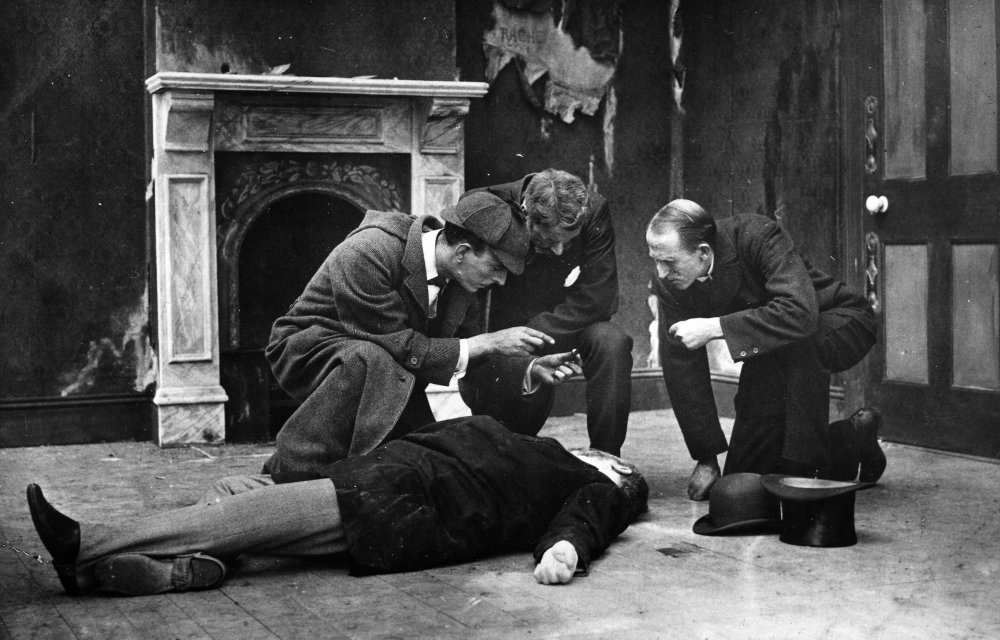
A Study in Scarlet (1914)
Why are we so keen to find it?
This is the first adaptation of the Sherlock Holmes story of the same title. A series of Anglo-French co-productions, starring Georges Treville as Holmes and based directly on Sir Arthur Conan Doyle’s tales, had been released in 1913, but A Study in Scarlet was the first British feature to be based on the adventures of the immortal detective. The film was directed by George Pearson, an important British filmmaker of the silent period.
What’s it about?
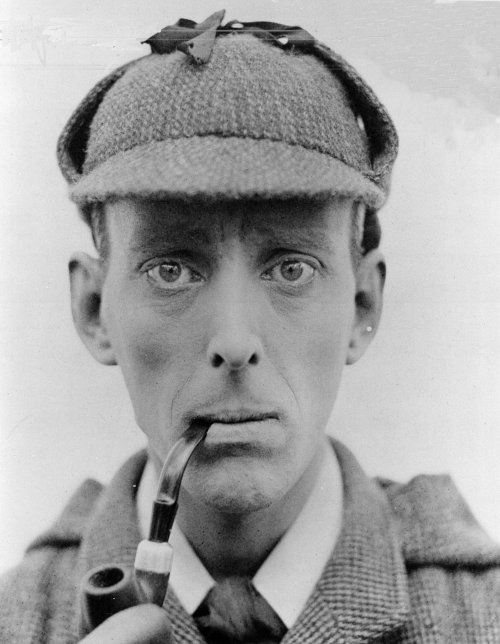
A Study in Scarlet (1914)
A party of Mormons travelling through the Utah valley rescue John Ferrier and his adopted daughter Lucy. John and Lucy settle in Salt Lake City. Thirteen years pass. One day Lucy is attacked by two young Mormon men, Drebber and Stangerson. Gold-digger Jefferson Hope comes to her rescue and the pair swiftly fall in love. But while Hope is away, Lucy is told she must marry one of her two attackers. She sends word to Hope, who returns in time to help her and her father escape. While Hope is separated from them, the Mormons strike back. John dies and Lucy is taken to Salt Lake City to be married to Drebber. Hope arrives on the day of the wedding but Lucy dies during the subsequent commotion. Hope swears revenge and trails Drebber and Stangerson around America and Europe until he eventually runs them to ground in London. Working as a cabdriver, Hope unexpectedly finds Drebber in his power…
The next day, Sherlock Holmes is called in to investigate Drebber’s murder. Before he can solve the crime, Stangerson is also found dead. Holmes concludes that a cabdriver was involved in both crimes. He uses the Baker Street Irregulars to track down Hope and then lures him to Baker Street. After a struggle, Holmes apprehends Hope, who tells his story and reveals the details of the murders.
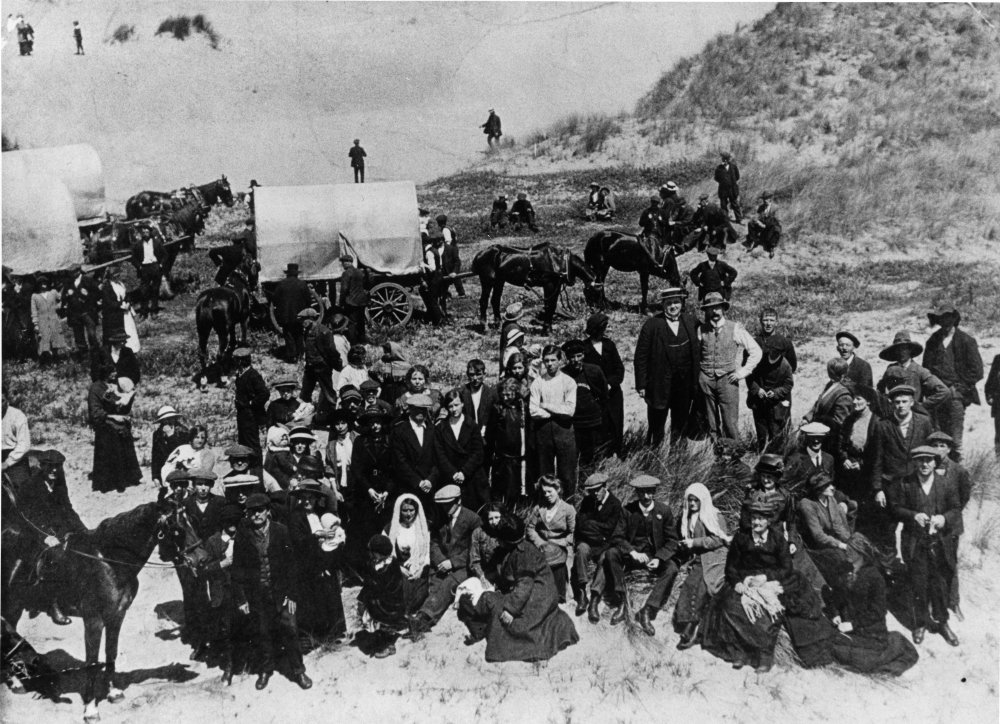
A Study in Scarlet (1914)
Last seen?
Not known to have been seen much after initial release, prints of the film may have suffered the fate of many others of the period – sacrificed for the war effort for the precious metals they contained.
What else do we know about it?
A Study in Scarlet was the first film director George Pearson made for the Samuelson Manufacturing Company. The casting of Sherlock Holmes was a challenge, as it was for filmmakers before and since. As Pearson recalled in his autobiography, “much depended upon his physical appearance, build, height, and mannerisms”, and it was important to find an actor who could live up to the general public’s idea of the great detective. By luck, one of Samuelson’s employees fitted the bill. James Bragington was not an actor, but Pearson was confident that he would be able to control his performance sufficiently. He was pleased with the results and felt that Bragington had played the part ‘excellently’ (all the same, A Study in Scarlet is Bragington’s only known film credit). When the Samuelson Company made a second Holmes adaptation, The Valley of Fear, two years later, the stage actor H.A. Saintsbury was cast in the role of Holmes.
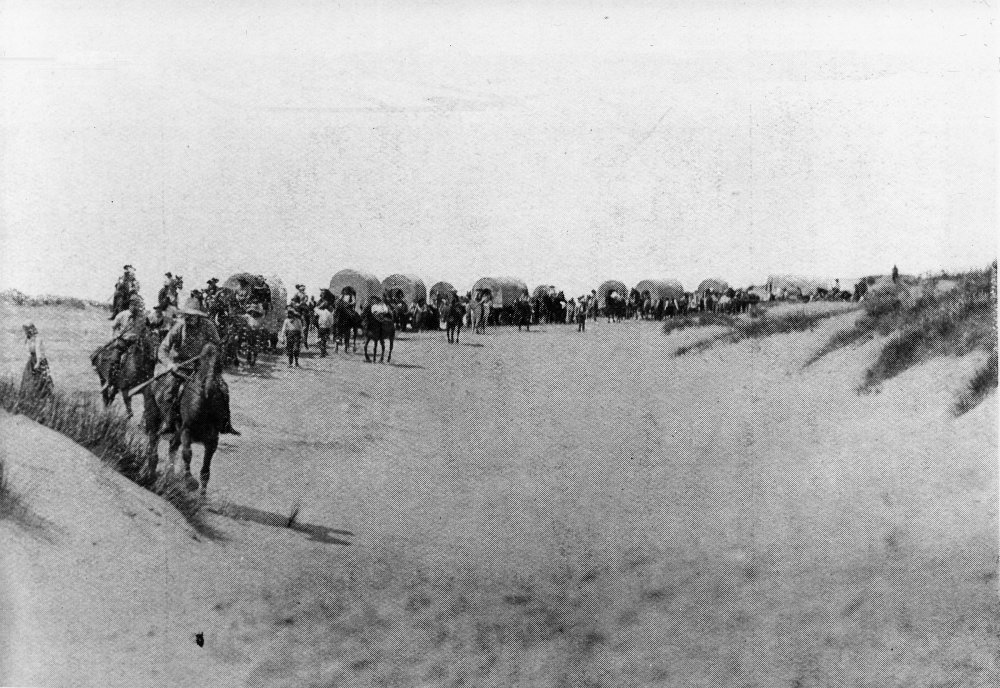
A Study in Scarlet (1914)
A Study in Scarlet was shot at Worton Hall studios and on location in the summer of 1914. Cheddar Gorge and Southport Sands stood in for the Rocky Mountains and the Utah plains. Reviewers praised Pearson’s clever handling of the film’s settings, finding the opening scenes of the Mormons crossing the desert ‘very beautiful’.
Near simultaneously and entirely separately, an American version was made with the same title by Francis Ford. This version was released in December 1914 but is also missing.
Does anything survive?
Director George Pearson writes about the making of the film in his autobiography, ‘Flashback’ (London: George Allen & Unwin, 1957). The BFI holds a pressbook for the film, which includes a long synopsis and several images.
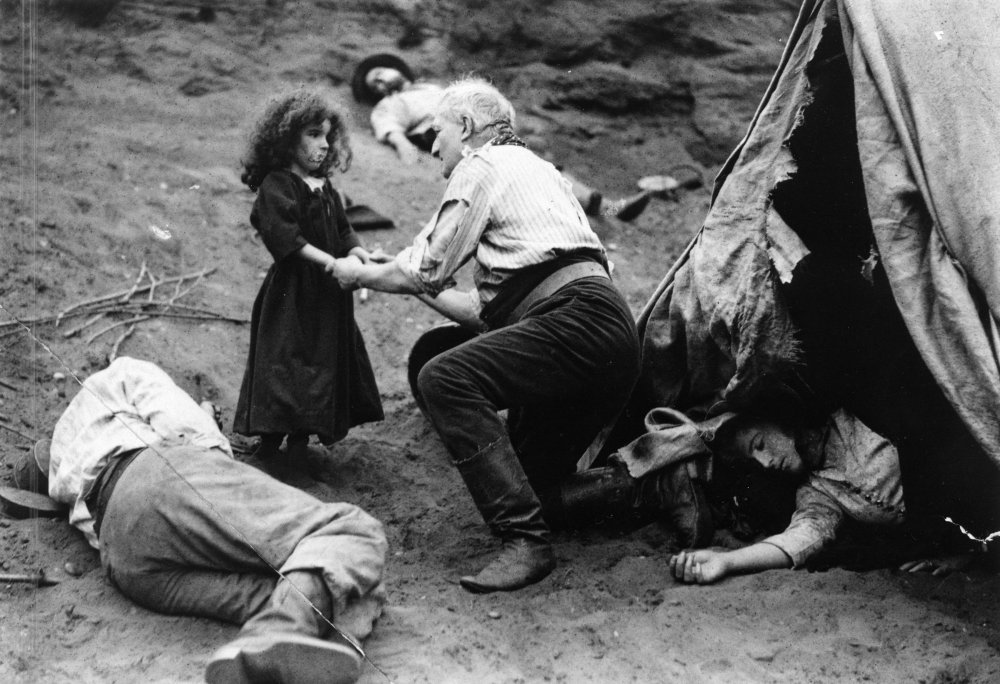
A Study in Scarlet (1914)
Reviews
Kinematograph Monthly (November 1914) acknowledged that “Sherlock Holmes is always welcome on the screen”, but also felt that “this drama will, in the long run, attract the public, not for anything Sherlock Holmes himself does (as a matter of fact he only appears in the last two reels) but for its striking pictures of life among the Mormons.” In common with numerous reviews of subsequent Sherlock Holmes adaptations, the trade journal noted that “on the screen, of course, the detective’s marvellous deductions are lost – you only see him ‘deducing’, which is not quite the same thing”. But ultimately, the reviewer felt, the drama of the production won through: “it keeps you intensely interested even though you may not be fully convinced.”
The Bioscope (15 October 1914, p. 203) felt that the story was handled in a ‘skilful’ way and enjoyed the picturesque location work. The reviewer found the acting “entirely satisfactory” and reserved special praise for Fred Paul, whose Jefferson Hope was described as a “very clever character study” and an “excellent piece of work”. It was felt that the film would “go far indeed toward placing this youthful producing house (Samuelson) in the front rank of English manufacturers.”
-
A Study in Scarlet (1914) press book
-
A Study in Scarlet (1914) press book
-
A Study in Scarlet (1914) press book
-
A Study in Scarlet (1914) press book
-
A Study in Scarlet (1914) press book
-
A Study in Scarlet (1914) press book
-
A Study in Scarlet (1914) press book
-
A Study in Scarlet (1914) press book
-
A Study in Scarlet (1914) press book
-
A Study in Scarlet (1914) press book
-
A Study in Scarlet (1914) press book
Nathalie Morris, Curator (Special Collections), BFI National Archive



